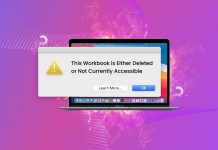 Apple has released the Lion Recovery Disk Assistant, which allows users to create an emergency boot partition on a external USB drive, using a hard drive or flash drive. You can download it here from Apple.
Apple has released the Lion Recovery Disk Assistant, which allows users to create an emergency boot partition on a external USB drive, using a hard drive or flash drive. You can download it here from Apple.
OS X Lion has a utility called Lion Recovery built in to the system that allows you to troubleshoot the system without an external drive. To access Lion Recovery, simply hold down Command-R when starting up. However, if your internal drive isn’t working for some reason, the Lion Recovery Disk Assistant will create an external partition that duplicates all the functions of built in Lion Recovery: reinstalling Lion, repairing the disk with Disk Utility, restoring a Time Machine backup, and web access using Safari.
It’s important to note that in order to create this external Lion Recovery drive, the external drive must have at least 1GB available, and the Mac must have an existing Recovery HD partition on it. In most cases, Lion will have automatically done this when you installed or upgraded from Snow Leopard. Certain disk partition configurations may have caused the Lion install to warn you that a Recovery HD could not be created, in which case you should have created an external bootable OS X Lion drive with a Recovery HD, as per these instructions.
Also important is that if your computer shipped with Lion, this external recovery drive can only be used with the system that created it. That means it’s tied to your Mac, and can’t be used on someone else’s computer. If you upgraded from OS X 10.6 Snow Leopard to Lion, the external recovery drive can be used with any computer that has been upgraded from Snow Leopard to Lion.
To use the newly created Lion Recovery drive, hold down the Option key on startup, and choose the Recovery HD from the startup menu.
With Apple’s move to digital distribution for OS X Lion, Mac users were left without the traditional install disc, and no means to easily fix hard drive or install problems. I would recommend that everyone using OS X Lion go ahead and take the time to create a Recovery drive. You’ll be glad you did, especially if (or when) your hard drive goes kaput.
Via: TNW
Source: Apple






